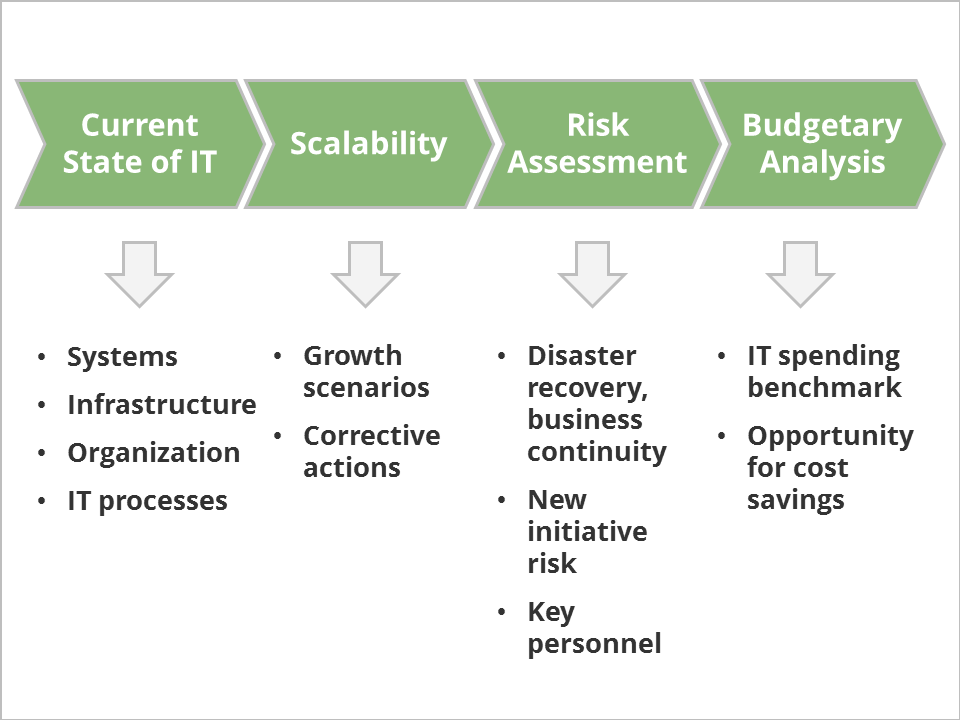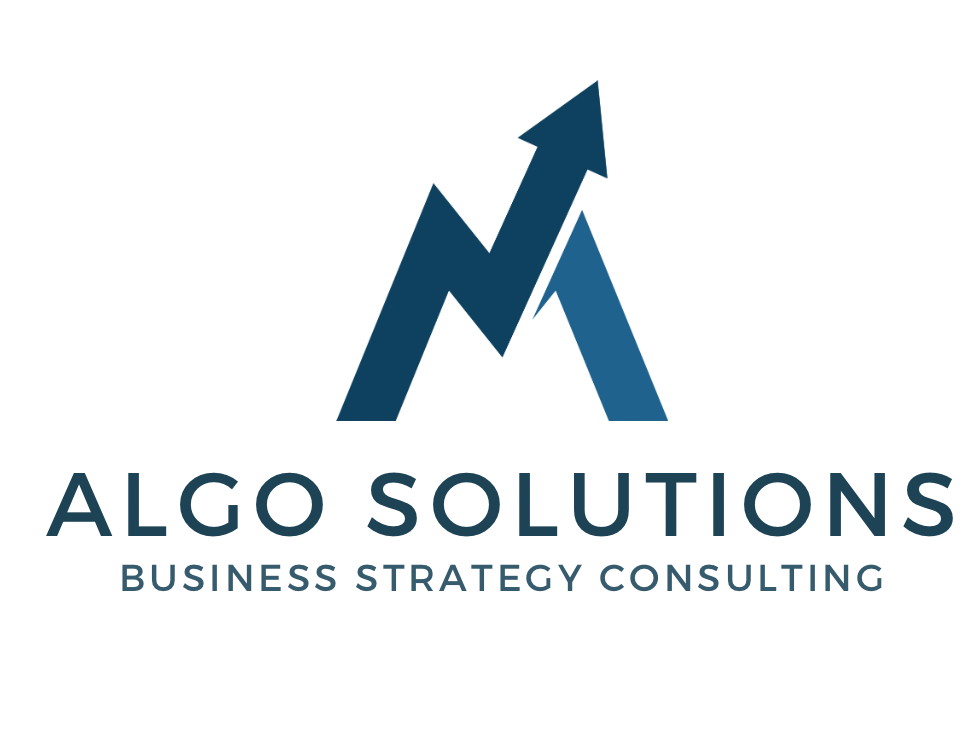IT DUE DILIGENCE CONSULTING
Investors frequently require a due diligence assessment of an organization’s information technology function as part of a merger or acquisition. Technical due diligence may also be required from time to time by business owners to ensure a better understanding of the IT function’s opportunities, costs, and risks. In either case, having a specialized and independent third party perform the technical assessment has a number of advantages.
- In the case of acquisitions or mergers, investors frequently view technical due diligence as a subset of the accounting team’s general responsibilities. While independence is desirable, it can be a mistake if the professionals involved lack in-depth knowledge of information technology or routine experience conducting information technology-specific due diligence.
- In the case of an internal assessment, business owners may delegate the task to the IT organization or to consultants who work on a day-to-day basis with the IT group. While this approach utilizes IT specialists, they are not independent due diligence consultants and have a financial stake in the outcome of the IT assessment.

Clearly, technical due diligence should be assigned to an IT consulting firm that possesses both the specialized expertise and the independence necessary to complete the job correctly.
Our IT due diligence consulting service assesses the current state of an organization’s IT systems, IT infrastructure, people, and processes, identifies cost-cutting opportunities, risks, and future system scenarios. Our due diligence assessment of information technology encompasses the following areas:
Current State of IT Capabilities
We begin by assessing existing IT systems and infrastructure, conducting an IT organizational review, and evaluating IT processes.
IT System Evaluation. Which application systems are installed, and how are they configured? Are they appropriate for a business of this size and in this industry? If the systems are packaged, how well supported are they by existing staff or vendors? Are users content?
Assessment of IT Infrastructure. What IT hardware or lease commitments do you have? What type of network infrastructure is currently in place? Who are the providers of services? What difficulties or difficulties exist? Are there any complications associated with the transfer of software licenses when corporate ownership changes? How much is the market or liquidation value of specific pieces of equipment?
Assessment of the Information Technology Organization. What is the current size and skill level of your IT staff? How does IT’s headcount and staff composition compare to other industries?
IT Process Assessment. What processes are currently in place for application development, information technology operations, disaster recovery, information technology security, and cost management? Which best practices in information technology management should be implemented?
Scalability
We can determine whether the IT infrastructure is scalable to support the target company’s anticipated growth based on our assessment of the target company’s current IT capabilities. Additionally, our IT consultants can identify corrective actions required to resolve current issues and outline future IT scenarios. Future scenarios may include expanding, upgrading, or replacing specific systems, integrating IT operations with a new corporate parent or other division, outsourcing part or all of the IT function, or implementing a new enterprise IT architecture. Scenario planning can be completed as part of the initial IT assessment or as a more detailed follow-up project.
Risk Assessment
A thorough IT due diligence process can help minimize risk, increase the likelihood of success, and increase the deal’s value during a merger or acquisition. The same considerations apply when we conduct an internal IT assessment.
- Business continuity and disaster recovery. Are information technology systems sufficiently protected against intrusion or known vulnerabilities? Is a disaster recovery plan in place? Have you implemented and tested backup/recovery procedures? Are there risks of non-compliance in regulated industries (e.g., life sciences)?
- Nouvelles initiatives. What system development initiatives are currently underway? What is the current situation? Should they be allowed to continue? What should be done to ensure the project’s success?
- Personnel critical. Who are the critical resources that must be retained? What steps should be taken to minimize the risk of losing these critical employees?
Analysis of the Budget
In some cases, IT organizations may have an unnecessarily high cost structure. In other cases, the organization may be spending less than its peers in the industry.
Benchmarking IT spending and staffing. How does your organization’s overall IT spending and staffing levels compare to those in the industry? Should this business spend more or less on information technology?
Cost-cutting opportunities. Is it possible to create value or improve performance through data center or server consolidation? Which contracts for maintenance, telecommunications, and service are in place? Are the rates reasonable? Is there coverage that is unnecessary or unused? Can certain IT capabilities be outsourced more cost-effectively? If outsourcing is already in place, are there any functions that could be performed more cost effectively internally?
Computer Economics, our sister IT research firm, provides us with useful data for benchmarking a company’s IT spending and preparing a useful economic analysis. Our structured methodology enables us to complete an IT due diligence in a timely manner. Additionally, our strict independence from technology vendors provides us with an objective perspective that is critical for investor due diligence or internal IT assessments.
